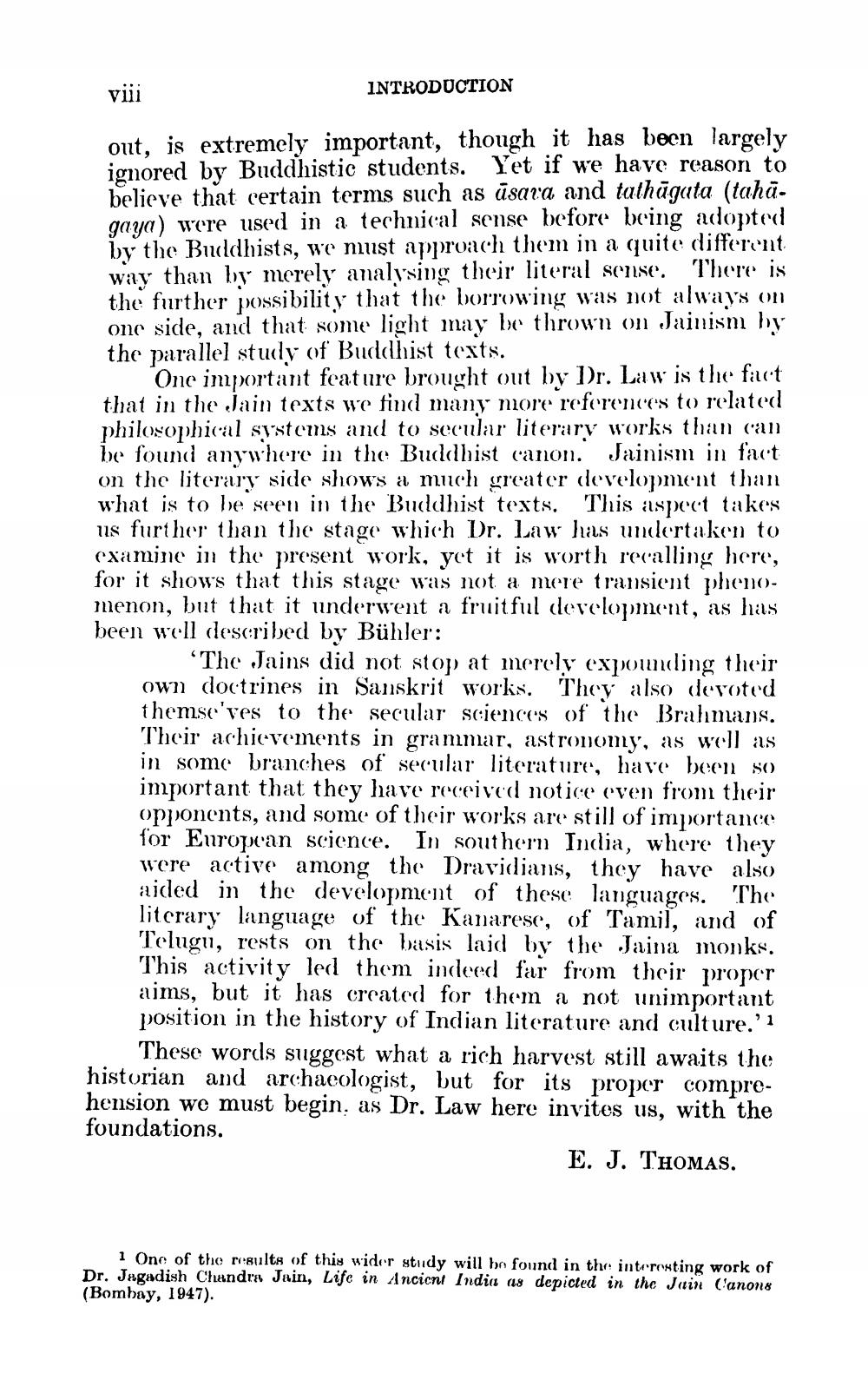Book Title: Some Jaina Canonical Sutras Author(s): Bimla Charn Law Publisher: Royal Asiatic Society View full book textPage 8
________________ vili INTRODUCTION out, is extremely important, though it has been largely ignored by Buddhistic students. Yet if we have reason to believe that certain terms such as ūsara and tathāgata (tahā. gaya) were used in a technical sense before being adopted by the Buddhists, we must approach them in a quite different way than by merely analysing their literal sense. There is the further possibility that the borrowing was not always on. one side, and that some light may be thrown on Jainism by the parallel study of Buddhist texts. One important feature brought out by Dr. Law is the fact that in the Jain texts we find many more references to related philosophical systems and to secular literary works than can be found anywhere in the Buddhist (anon. Jainism in fact on the literary side shows a much greater development than what is to be seen in the Buddhist texts. This aspect takes us further than the stage which Dr. Law has undertaken to examine in the present work, yet it is worth recalling here, for it shows that this stage was not a mere transient phenomenon, but that it underwent a fruitful development, as has been well described by Bühler: The Jains did not stop at merely expounding their own doctrines in Sanskrit works. They also devoted themse'ves to the secular sciences of the Bralımans. Their achievements in grammar, astronomy, as well as in some branches of secular literature, have been so important that they have received notice even from their opponents, and some of their works are still of importance for European science. In southern India, where they were active among the Dravidians, they have also aided in the development of these languages. The literary language of the Kanarese, of Tamil, and of Telugu, rests on the basis laid by the Jaina monks. This activity led them indeed far from their proper ajms, but it has created for them a not unimportant position in the history of Indian literature and culture.'1 These words suggest what a rich harvest still awaits the historian and archaeologist, but for its proper comprehension we must begin. as Dr. Law here invites us, with the foundations. E. J. THOMAS. 1 One of the results of this wider study will be found in the interesting work of Dr. Jagadish Chandra Jain, Life in Ancient India as depicted in the Jain Canons (Bombay, 1947).Page Navigation
1 ... 6 7 8 9 10 11 12 13 14 15 16 17 18 19 20 21 22 23 24 25 26 27 28 29 30 31 32 33 34 35 36 37 38 39 40 41 42 43 44 45 46 47 48 49 50 51 52 53 54 55 56 57 58 59 60 61 62 63 64 65 66 67 68 69 70 71 72 73 74 75 76 77 78 79 80 81 82 ... 229
